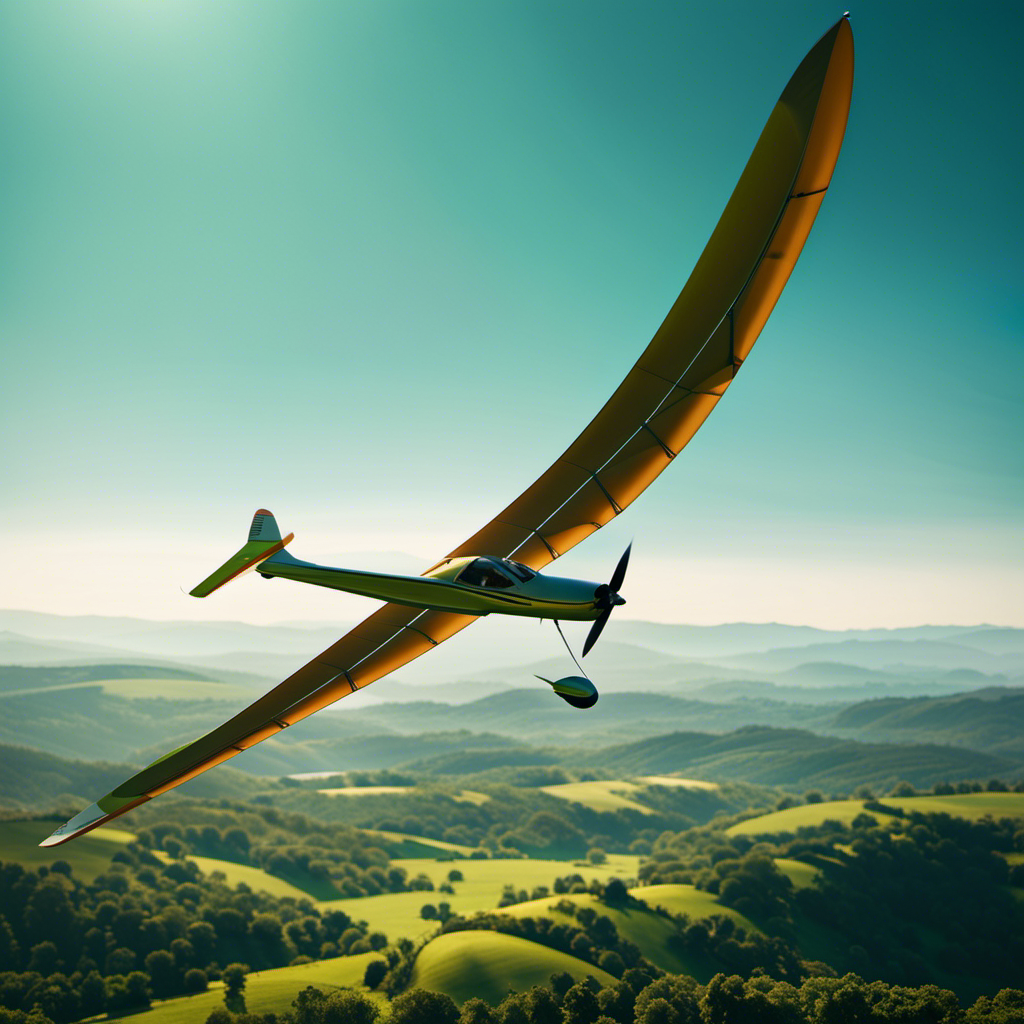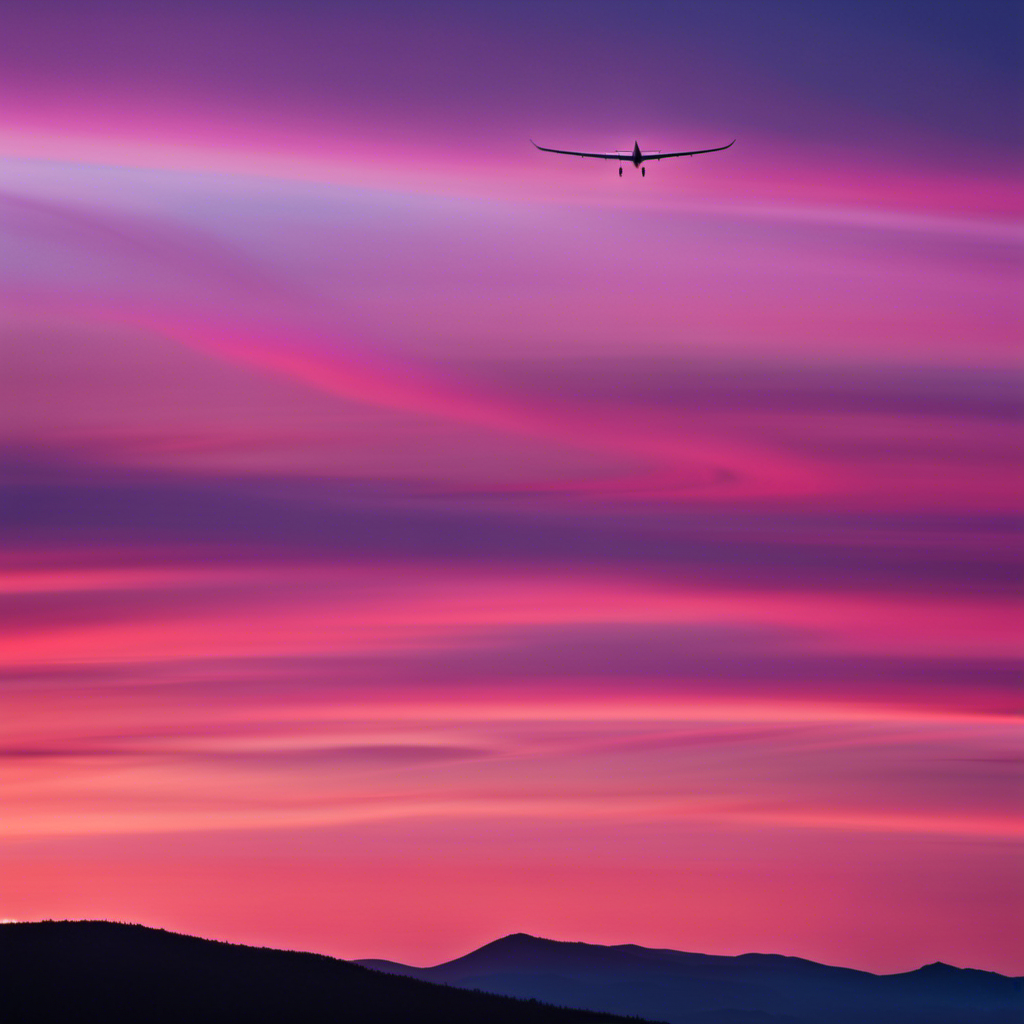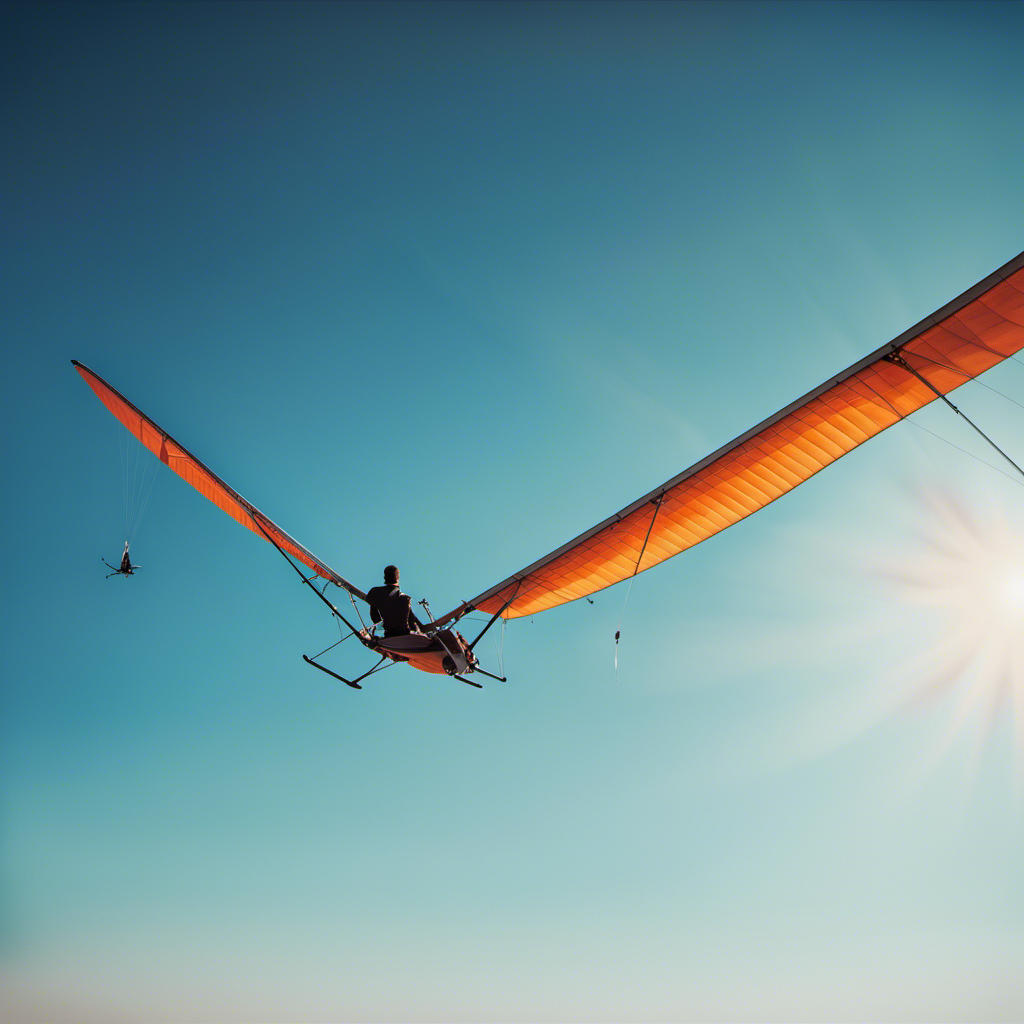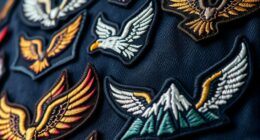As a skilled glider pilot, I am often asked, “How far can a glider travel?” Well, let me tell you, the answer might surprise you.
Gliders, those magnificent feats of engineering and skill, have pushed the boundaries of human flight to unimaginable distances.
In this article, we’ll delve into the basics of gliders, explore the factors that affect their flight, and marvel at the longest glider flights in history.
So buckle up, because we’re about to soar to new heights in the world of gliding.
Key Takeaways
- Factors such as wind conditions, thermals, glider design, and pilot skill greatly impact the distance a glider can fly.
- Some of the longest glider flights in history have reached distances of over 3,000 km, inspiring pilots worldwide.
- Glider racing competitions require excellent piloting skills and a deep understanding of techniques and strategies.
- Technology advancements in gliders, such as new wing designs and lightweight materials, have revolutionized the sport and enhanced safety.
The Basics of Gliders
So, how far can you make a glider fly?
As an experienced glider pilot, I can tell you that the distance a glider can travel mainly depends on the flying techniques employed and the maintenance of the glider itself.
When it comes to flying techniques, it’s crucial to understand the principles of lift and how to maximize it. This involves using thermals, updrafts, and ridge lifts to stay aloft for longer durations.
Additionally, maintaining the glider is essential for achieving optimal performance. Regular inspections, repairs, and proper storage are necessary to ensure that the glider remains in top condition.
By mastering flying techniques and diligently maintaining the glider, you can significantly increase your chances of achieving longer and more successful flights.
Now, let’s delve into the factors that affect glider flight.
Factors Affecting Glider Flight
To achieve optimal flight, you’ll want to consider the various factors that can affect how long a glider can stay in the air. These factors can include wind conditions, thermals, the design of the glider, and the skill of the pilot.
Wind conditions play a crucial role in glider flight, as they can either provide lift or hinder progress. Thermals, which are columns of rising warm air, can be used by gliders to gain altitude and extend their flight time. The design of the glider, including its wingspan and weight, also impacts its ability to stay airborne. Lastly, the skill of the pilot in exploiting these factors and making precise adjustments is essential for maximizing glider flight time.
Understanding and mastering these factors can lead to impressive and record-breaking glider flights.
Transitioning into the subsequent section about the ‘longest glider flights in history,’ these pilots have undoubtedly mastered the factors that affect glider flight, pushing the boundaries of what is possible in terms of endurance and distance traveled.
Longest Glider Flights in History
If you want to be amazed by incredible feats of endurance and distance in the world of glider flight, then you should definitely explore the history of the longest flights ever recorded. These remarkable achievements push the boundaries of what is possible in glider flight and showcase the skill and determination of the pilots who undertake them.
Here are some of the most impressive records in glider flight history:
-
The longest glider flight ever recorded was achieved by Klaus Ohlmann in 2003, who flew a distance of 3,008 kilometers (1,869 miles) in Argentina.
-
In 1983, Steve Fossett set a record by completing a 2,656-kilometer (1,649-mile) flight in the United States.
-
The third longest glider flight record goes to Robert Harris, who flew 2,546 kilometers (1,581 miles) in Australia in 1987.
-
Another notable glider flight record was set by Klaus Holighaus in 1986, flying a distance of 2,502 kilometers (1,556 miles) in Germany.
These extraordinary achievements demonstrate the incredible potential of glider flight and inspire pilots around the world to push the boundaries of what is possible.
Transitioning into the next section about glider racing competitions, these records serve as a testament to the skill and precision required in such competitions.
Glider Racing Competitions
Have you ever considered participating in glider racing competitions and experiencing the thrill of competing against other skilled pilots? Glider racing is a captivating sport that requires not only excellent piloting skills but also a deep understanding of glider racing techniques and strategies.
To succeed in glider racing, pilots must master the art of finding and utilizing thermals, which are columns of rising air that can provide the necessary lift to sustain flight. They must also develop a keen sense of navigation, constantly analyzing wind patterns and choosing the most advantageous flight paths. Additionally, pilots must employ effective speed control techniques to optimize their performance while conserving energy.
Technology Advancements in Gliders
With these advancements, you can now experience the thrill of glider racing like never before. Technology advancements and aerodynamics improvements have revolutionized the world of gliders, making them faster, more efficient, and safer to fly. Let’s take a look at some of the key advancements in glider technology:
| Advancement | Description |
|---|---|
| Wing Design | New wing profiles and shapes have been developed to enhance lift and reduce drag, resulting in improved performance and longer gliding distances. |
| Cockpit Instruments | Modern gliders are equipped with state-of-the-art instruments that provide pilots with real-time data on airspeed, altitude, and navigation, allowing for precise control and strategic decision-making. |
| Structural Materials | Lightweight materials such as carbon fiber and composites have replaced traditional materials, reducing weight and increasing strength, resulting in better maneuverability and increased safety. |
| Safety Systems | Advanced safety systems, including parachute recovery systems and improved cockpit designs, have been implemented to enhance pilot safety and minimize the risk of accidents. |
These technology advancements have not only transformed glider racing but also opened up new possibilities for cross-country gliding adventures.
Cross-Country Gliding Adventures
Embark on exhilarating cross-country gliding adventures and explore the breathtaking landscapes from a whole new perspective. Glider tourism has gained popularity as more people seek unique and thrilling experiences.
From the soaring peaks of the Alps to the vast plains of the American Midwest, there are famous cross-country routes that offer unparalleled views and challenges for glider pilots. As an experienced glider pilot myself, I can attest to the excitement and sense of freedom that comes with navigating these routes.
From thermals to ridge lifts, mastering the techniques required for cross-country gliding is essential.
In the next section, we will delve into the world of gliders in extreme environments, where pilots push the boundaries of what is possible in this incredible sport.
Gliders in Extreme Environments
In extreme environments, gliders face unique challenges that test the skills and resilience of pilots. Extreme weather conditions can significantly impact glider performance, making it crucial for pilots to understand the implications and adjust their flying techniques accordingly.
High winds, turbulence, and severe temperature variations can all affect the aerodynamics and handling of a glider, requiring pilots to employ advanced flying skills to maintain control and stability. Additionally, extreme weather can also impact the lift and thermals available for gliding, making it necessary for pilots to adapt their flight plans and strategies.
Understanding how to navigate and make the most of these challenging conditions is essential for glider pilots to ensure safe and successful flights.
Transitioning into the next section on glider safety and training, it is imperative for pilots to receive comprehensive instruction and practice in handling extreme weather situations to enhance their flying abilities.
Glider Safety and Training
As an experienced glider pilot, I understand the importance of proper training in ensuring safe and successful flights. Training not only provides the necessary skills and knowledge, but also instills the discipline and mindset required to handle the challenges of gliding.
Additionally, safety equipment and protocols play a crucial role in mitigating risks and protecting both pilots and passengers. By understanding and adhering to these protocols, we can minimize the chances of accidents and ensure a safe and enjoyable gliding experience.
Importance of proper training
Proper training is essential for glider pilots to maximize their flight potential. As a glider pilot myself, I understand the importance of learning advanced techniques and staying up-to-date with safety regulations.
Advanced techniques, such as thermalling and ridge soaring, allow pilots to gain altitude and extend their flights. These techniques require precise control and expert knowledge, which can only be acquired through proper training.
Additionally, being well-versed in safety regulations ensures that pilots are aware of their responsibilities and can minimize risks during flights. By understanding airspace restrictions, weather patterns, and emergency procedures, pilots can ensure the safety of themselves and others.
Transitioning into the next section on safety equipment and protocols, it is crucial for glider pilots to not only possess the necessary skills but also be equipped with the right tools to handle any situation that may arise.
Safety equipment and protocols
Being equipped with the right tools and knowing the proper protocols is essential for ensuring the safety of glider pilots. Safety gear plays a crucial role in protecting pilots in the event of an emergency. Every glider pilot should have a parachute, a reliable communication device, and a first aid kit on board. These items can mean the difference between life and death in a critical situation.
In addition to having the necessary safety gear, glider pilots must be well-versed in emergency procedures. This includes knowing how to handle engine failures, stall recoveries, and emergency landings. By following established protocols, pilots can minimize the risks associated with these emergencies.
Transitioning into the next section, it is important to understand the common risks and how to mitigate them.
Common risks and how to mitigate them
To mitigate common risks, pilots should always have a thorough understanding of emergency procedures and be prepared with the necessary safety gear. Gliding, while exhilarating, comes with its own set of risks that require careful risk mitigation strategies. By identifying and addressing potential dangers, pilots can ensure a safe and enjoyable flight.
Some common risks in gliding include loss of control, mid-air collisions, inclement weather conditions, and human error. To mitigate these risks, pilots should undergo comprehensive training, regularly practice emergency procedures, and equip themselves with the appropriate safety gear. Furthermore, staying updated with weather forecasts and adhering to airspace regulations are crucial for safe gliding operations. By employing these risk mitigation measures, pilots can minimize the likelihood of accidents and ensure a smooth gliding experience.
Transitioning into the subsequent section about ‘gliding as a hobby,’ it is important to note that understanding and mitigating common risks is just the first step towards becoming a skilled glider pilot.
Gliding as a Hobby
When it comes to getting started in gliding, joining a glider club is a great first step. These clubs provide access to experienced instructors and a supportive community of fellow glider enthusiasts.
The benefits of gliding as a hobby are numerous. From the thrill of soaring through the sky to the opportunity to develop valuable skills in navigation and meteorology.
Getting started in gliding
Before you begin gliding, make sure to familiarize yourself with the basics of getting started in this exhilarating sport. Glider training is essential to ensure you have the necessary skills and knowledge to safely navigate the skies.
As a beginner, you will learn the fundamental techniques of gliding, such as how to properly launch and control the glider, how to maintain altitude using thermals, and how to execute smooth landings. These skills will lay the foundation for your future gliding adventures.
Once you have mastered the beginner gliding techniques, you may consider joining a glider club. Being part of a glider club offers numerous benefits, including access to experienced instructors, opportunities for further training and competitions, and a community of fellow glider enthusiasts to share your passion with.
Joining a glider club
Once you’ve joined a glider club, you’ll have access to experienced instructors who can help you further develop your skills and knowledge in the sport. Glider clubs offer a range of resources and opportunities for gliding enthusiasts. Here are a few ways you can enjoy your membership:
-
Participate in glider competitions: Glider clubs often organize competitions where pilots can showcase their skills and compete against fellow gliders. These events provide a thrilling experience and a chance to test your abilities.
-
Focus on gliding safety: Safety is of utmost importance in gliding, and glider clubs prioritize it. They offer training programs and workshops to ensure that members are well-versed in safety procedures and practices.
-
Engage in community activities: Glider clubs foster a strong sense of community among members. You can participate in social events, fly-ins, and gatherings to connect with like-minded individuals and share your experiences.
By immersing yourself in the glider club community, you’ll gain valuable knowledge, enhance your skills, and have the opportunity to engage in exciting gliding activities.
Transition: Now that you’re familiar with the benefits of joining a glider club, let’s explore the many advantages of gliding as a hobby.
Benefits of gliding as a hobby
As a gliding enthusiast, you can experience the thrill of soaring through the sky and feel a sense of freedom like never before. Gliding as a hobby offers numerous benefits that make it a truly unique and rewarding experience. Not only do you get to participate in exciting glider competitions and showcase your skills, but you also have the opportunity to appreciate the beauty of nature from a whole new perspective. Gliding in nature allows you to glide over breathtaking landscapes, witness stunning sunsets, and spot wildlife from above. It’s a serene and meditative experience that connects you with the elements and brings a sense of tranquility. The table below highlights some of the key benefits of gliding as a hobby:
| Benefits | Description |
|---|---|
| Thrill and Adventure | Experience the exhilaration of flying without an engine. |
| Connection with Nature | Glide over picturesque landscapes and appreciate the beauty of the natural world. |
| Skill Development | Hone your piloting skills and gain a deeper understanding of aerodynamics. |
As we look towards the future of gliding, advancements in technology and aerodynamics will continue to push the boundaries of what is possible in this incredible sport. The future holds exciting possibilities for gliding enthusiasts, with innovations like electric gliders and improved materials that enhance performance and efficiency. The sky is truly the limit for gliding, and the future promises even more thrilling and awe-inspiring experiences.
Future of Gliding
In recent years, there have been significant innovations and advancements in glider technology, making them more efficient and capable than ever before. These advancements have opened up new possibilities for gliding in sustainable aviation. Gliders can now fly longer distances and at higher speeds using renewable energy sources.
Looking ahead, gliding has the potential to become a popular sport and recreational activity in the future. It can attract enthusiasts who are seeking a thrilling and environmentally-friendly way to experience the joy of flight.
Innovations and advancements in glider technology
The advancements in glider technology have significantly increased how far they can fly. Glider efficiency and aerodynamics advancements have played a crucial role in pushing the boundaries of gliding capabilities. Here are some key factors that evoke awe and excitement in the world of gliding:
-
Improved Wing Design: The use of innovative wing profiles and materials has led to reduced drag and increased lift, allowing gliders to stay aloft for extended periods.
-
Enhanced Glide Ratios: By optimizing the shape and structure of the glider, engineers have achieved higher glide ratios, meaning gliders can cover more distance while descending.
-
Advanced Control Systems: Cutting-edge control systems, including fly-by-wire technology and computer-assisted flight controls, have improved the maneuverability and stability of gliders, enabling pilots to explore new horizons.
With these remarkable advancements, gliders have the potential to play a significant role in sustainable aviation, offering an environmentally friendly alternative to conventional aircraft. By harnessing nature’s energy and utilizing the latest technological innovations, gliding can pave the way for a greener and more efficient future in aviation.
Potential for gliding in sustainable aviation
Glider technology has the potential to revolutionize sustainable aviation by offering an eco-friendly alternative to traditional aircraft. As an experienced glider pilot, I understand the sustainability challenges and the environmental impact associated with aviation.
Gliders, with their ability to fly without an engine, produce zero emissions and have a significantly lower carbon footprint compared to powered aircraft. This makes gliders an attractive option for reducing the environmental impact of aviation.
With advancements in glider design and materials, gliders are becoming more efficient and capable of flying longer distances. By harnessing renewable energy sources such as thermals and ridge lift, gliders can stay aloft for hours, covering great distances.
Transitioning to glider technology in sustainable aviation will not only address environmental concerns but also pave the way for gliding to become a sport and recreational activity in the future.
Gliding as a sport and recreational activity in the future
Imagine yourself soaring through the sky, effortlessly riding the currents and experiencing the thrill of gliding as a popular sport and recreational activity in the future. Gliding, also known as soaring, has come a long way from its humble beginnings. With advancements in technology and increased interest, gliding has evolved into more than just a leisurely pastime.
Here are some exciting possibilities for the future of gliding:
-
Gliding as an Olympic sport: With its combination of skill, precision, and strategy, gliding has the potential to become an official Olympic sport. Imagine watching athletes compete in breathtaking displays of aerobatics and speed.
-
Gliding as a form of transportation: As we strive for sustainable and eco-friendly alternatives, gliding could become a viable mode of transportation. Imagine gliding effortlessly through the air, avoiding traffic congestion and reducing carbon emissions.
-
Technological advancements: With ongoing advancements in materials, aerodynamics, and navigation systems, gliders of the future will be even more efficient, safer, and capable of longer flights.
The future of gliding is bright, offering endless possibilities for both competitive athletes and enthusiasts alike.
Frequently Asked Questions
How long can a glider stay in the air without any external assistance?
A glider can stay in the air without any external assistance for an impressive amount of time, known as glider endurance or glider flight duration. This is determined by factors such as weather conditions, pilot skill, and glider design.
How high can a glider fly?
As a seasoned glider pilot, I can tell you that the maximum altitude a glider can reach depends on various factors. These include wind conditions, thermals, and the glider’s performance capabilities.
Can gliders fly at night?
Yes, gliders can fly at night. Glider navigation relies on instruments like GPS and compasses. Safety measures include proper lighting, night-vision goggles, and adherence to flight regulations. Night flying requires additional training and caution.
What is the average distance covered in a glider racing competition?
In glider racing competitions, the average distance covered depends on various factors such as average speed and weather conditions. It’s like navigating uncharted skies, where skill and strategy determine success.
Are there any plans to develop gliders that can fly in space?
There are ongoing plans to develop gliders for space exploration. Future advancements in technology will enable gliders to fly in space, pushing the boundaries of human exploration and expanding our understanding of the universe.
Conclusion
In conclusion, gliding is a truly remarkable sport that allows individuals to soar through the sky like birds. From the longest glider flights in history to the advancements in technology, gliding has come a long way.
Just like a well-oiled machine, gliders have been designed and perfected to achieve incredible distances. With proper training and safety measures in place, gliding can be a thrilling and fulfilling hobby for those who seek the ultimate freedom in flight.
So spread your wings and let the wind carry you to new heights, for the sky is your playground.
With a heart that soars as high as the skies, Aria, affectionately known as “Skylark,” is the driving force behind Soaring Skyways. Her journey into the gliding world began as a young dreamer gazing up at the soaring birds, yearning to experience the weightlessness and freedom they embodied. With years of experience both in the cockpit and behind the scenes, Aria’s commitment to the gliding community is unwavering.










